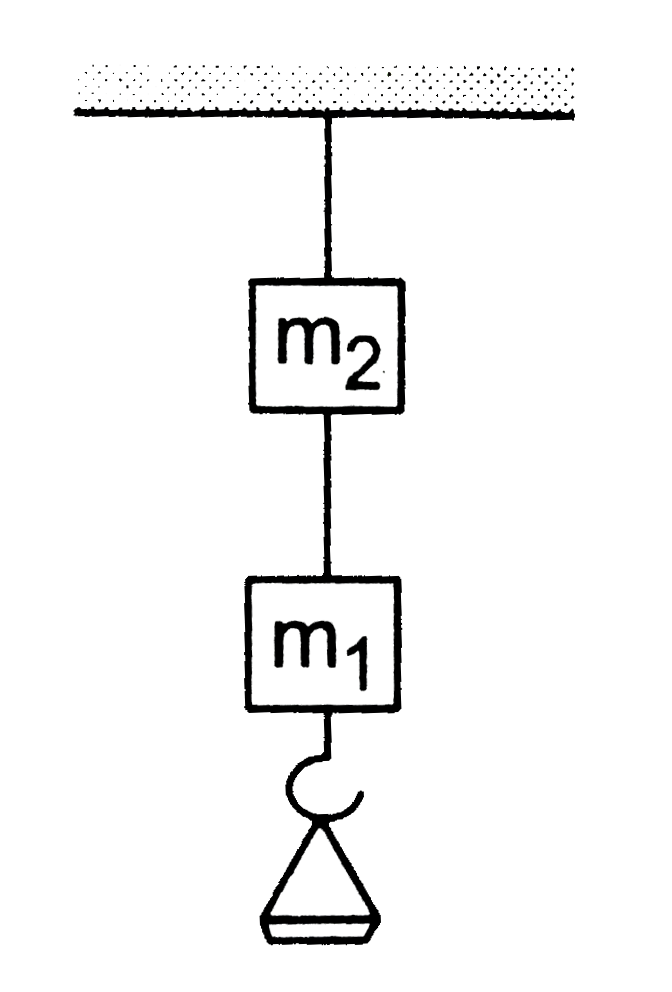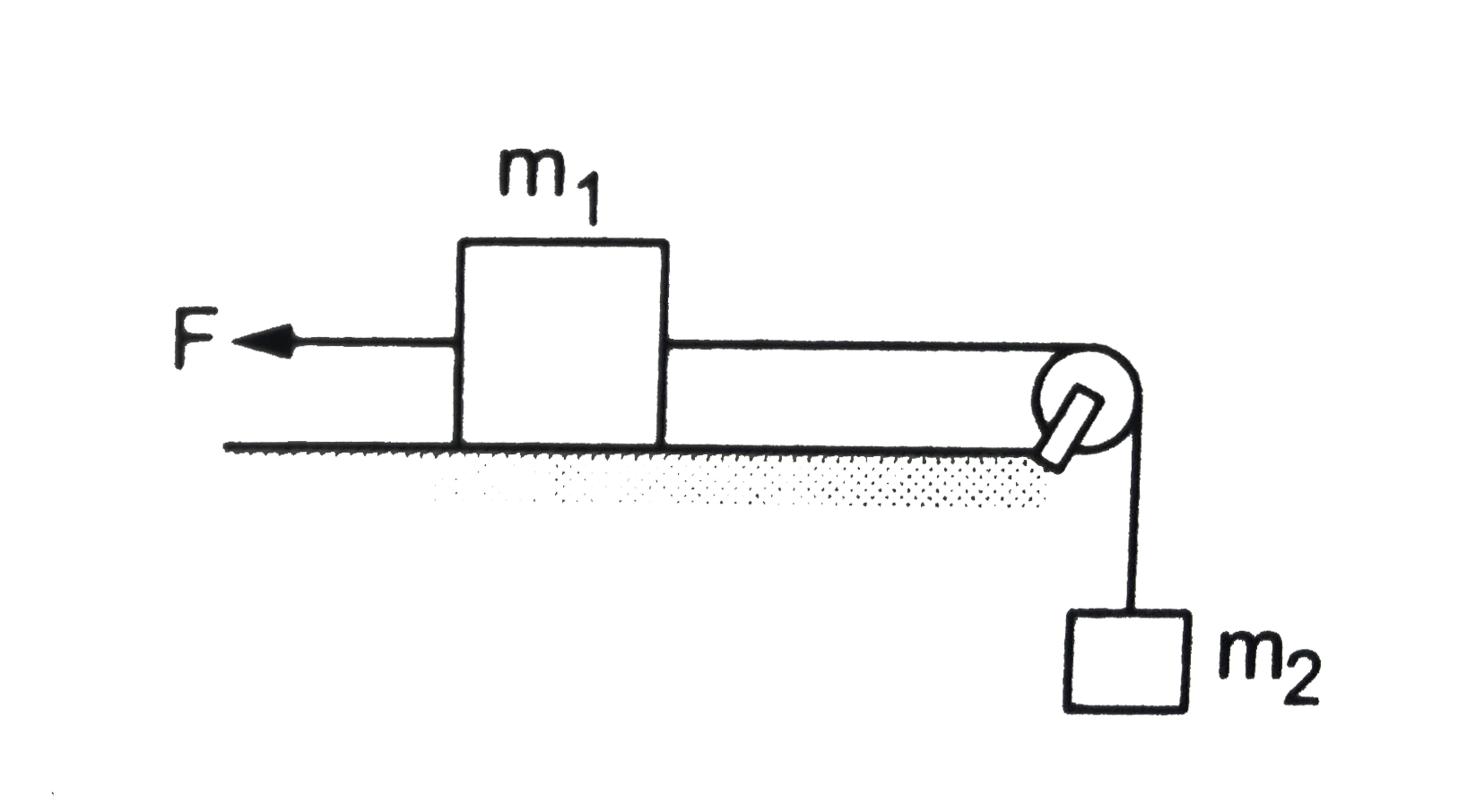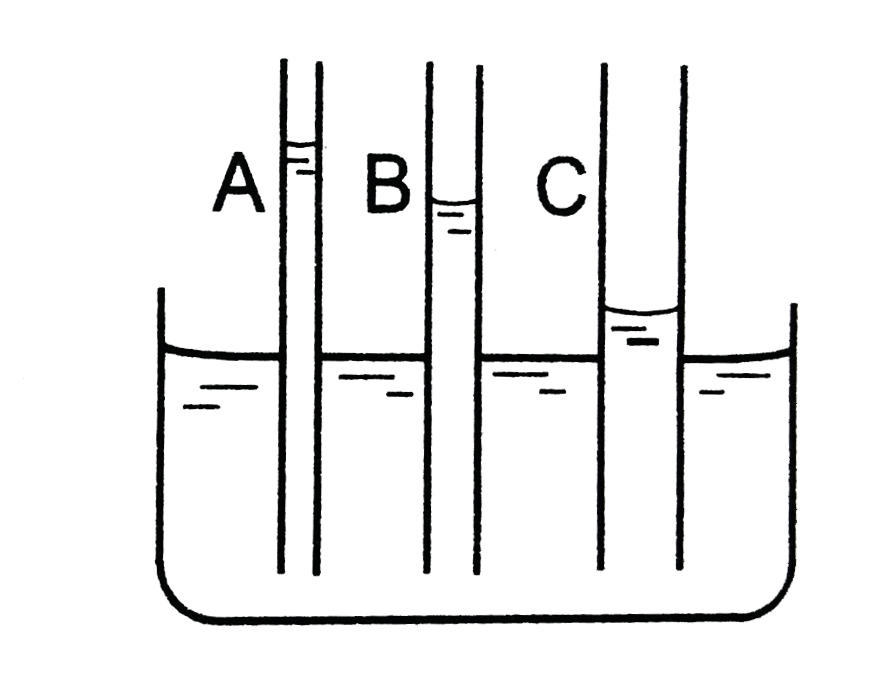Complete Solutions to Exercises of chapter SOME MECHANICAL PROPERTIES OF MATTER of Class 11 book with complete answers and questions
| Class 11 | PHYSICS |
| Chapter | SOME MECHANICAL PROPERTIES OF MATTER |
| HC VERMA | Exercises |
| Number Of Questions | 32 |
| Academic Year | 2023-24 |
A load of 10 kg is suspended by a metal wire 3 m long and having a cross sectional area `4mm^2`. Find a. the stress b. the strain and c. the elongation. Young modulus of the metal is`2.0xx10^11Nm^-2`
View SolutionA vertical metal cylinder of radius 2 cm and length 2 m is fixed at the lower end and a load of 100 kg is put on it. find a. the stress b. the strain and c. the compression of the cylinder. Young modulus of the metal `=2xx10^11Nm^-2`
View SolutionThe elastic limit of steel is `8xx10^8Nm^-2` and its Young modulus `2xx10^11Nm^-2`. Find the maximum elongation of a half meter steel wire that can be given without exceeding the elastic limit.
View SolutionA steel wire and a copper wire of equal length and equal cross sectional area are joined end to end and the combination is subjected to a tension. Find the ratio of a. The stresses developed in the two wire and b. the strains developed. Y of steel `=2xx10^11Nm^-2`. Y of copper `=1.3xx10^11 Nm^-2`.
View SolutionIn figure the upper wire is made of steel and the lower of copper. The wires have equal cross section. Find the ratio of the longitudinal strains developed in the two wires.

View SolutionThe two wires shown in figure are made of the same material which has a breaking stress of `8xx10^8Nm^-2`. The area of cross section of the upper wire is `0.006 cm^2` and that of the lower wire is `0.003 cm^2`. The mass `m_1=10 kg`, `m_2=20kg` and the hanger is light. a. Find the maximum load that can be put on the hanger without breaking a wire. Which wire will break first if the load is increased? b. Repeat the above part `m_1=10 kg and m_2=36kg`.

View SolutionTwo person pull a rope towards themselves. Each person exerts a force of 100 N on the rope. Find the Young modulus of the material of the rope if it extends in length by 1 cm. Original length of the rope=2 m and the area of cross section =`2 cm^2`.
View SolutionA steel rod of cross sectional area `4cm^2` and length `2m` shrinks by `0.1 cm` as the temperature decreases in night. If the rod is clamped at both ends during the day hours, find the tension developed in it during night hours. Young modulus of steel `=1.9xx10^11 Nm^-2`
View SolutionConsider the situation shown in figure. The force F is equal to the `(m_2g)/2`. If the area of cross section of the string is A and its Young modulus Y, find the strain developed in it. The string is light and there is no friction anywhere.

View SolutionA sphere of mass 20 kg is suspended by a metal wire of unstretched length 4 m and diameter 1 mm. When in equilibrium there is a clear gap of 2 mm between the sphere and the floor. The sphere is gently pushed aside so that the wire makes an angle `theta` with the vertical and is released. Find the maximum value of `theta` so that the sphere does not rub the floor. young's modulus of the metal of the wire is `2.0xx10^11 Nm^-2`. Make appropriate approximation.
View SolutionA steel wire of original length `1 m` and cross-sectional area `4.00 mm^2` is clamped at the two ends so that it lies horizontally and without tension. If a load of `2.16 kg` is suspended from the middle point of the wire, what would be its vertical depression ?
Y of the steel `=2.0xx10^11Nm^-2`. Take `g=10 ms^-2`
View SolutionA copper wire of cross sectional area `0.01 cm^2` is under a tension of `20 N`. Find the decrease in the cross sectional area. Young modulus of copper `=1.1xx10^11Nm^-2` and Poisson ratio `0.32`.
View SolutionFind the increase in pressure required to decrease the volume of a water sample of 0.01%. Bulk modulus of water `=2.1xx10^9Nm^-2`.
View SolutionCalculate the apprroximate change in density of water in a lake at a depth of `400 m ` below the surface. The density of water at the surface id `1030 kg//m^(3)` and bulk modulus of water is `2xx10^(9) N//m^(2)`.
View SolutionA steel plate of face area `4 cm^2` and thickness `0.5 cm` is fixed rigidly at the lower surface. A tangential force of `10 N` is applied on the upper surface. Find the lateral displacement of the upper surface with respect to the lower surface. Rigidity modulus of steel `=8.4xx10^10Nm^-2`.
View SolutionA 5.0 cm long straight piece of thread is kept on the surface of water. Find the force with which the surface on one side of the thread pulls it. Surface tension of water `=0.076Nm^-1`
View SolutionFind the excess pressure inside (a) a drop of mercury of radius 2 mm (b) a soap bubble of radius 4 mm and (c) an air bubble of radius 4 mm formed inside a tank of water. Surface tension of mercury, soap solution and water are `0.465Nm^-1, 0.03Nm^-1 and 0.076Nm^-1` respectively.
View SolutionConsider a small surface area of `1 mm^2` at the top of a mercury drop of radius 4.0 mm. Find the force exerted on this area (a) by the air above it (b) by the mercury below it and (c) by the mercury surface in contact with it. Atmospheric pressure `=1.0xx10^5Pa` and surface tension of mercury `=0.465Nm^-1.` Neglect the effect of gravity. Assume all numbers to be exact.
View SolutionThe capillaries shown in figure have inner radii 0.5 mm, 1.0 mm and 1.5 mm respectively. The liquid in the beaker is water. Find the heights of water level in the capillaries. The surface tension of water is `7.5xx10^-2Nm^-1`.

View SolutionThe lower end of a capillary tube is immersed in mercury. The level of mercury in the tube is found to be 2 cm below the outer level. If the same tube is immersed in water, up to what height will the water rise in the capillary ?
View SolutionA barometer is constructed with its tube having radius 1.0 mm. Assume that the surface of mercury in the tube is spherical in shape. If the atmospheric pressure is equal to 76 cm of mercury, what will be the height raised in the barometer tube? The contact angle of mercury with glass`135^@` and surface tension of mercury `=0.466Nm^-1`. Density of mercury`=13600kgm^-3`.
View SolutionA capillary tube of radius 0.50 mm is dipped vertically in a pot of water. Find the difference between the pressure of the water in the tube 5.0 cm below the surface and the atmospheric pressure. Surface tension of water `=0.075Nm^-1`
View SolutionFind the surface energy of water kept in a cylindrical vessel of radius 6.0 cm. Surface tension of water `=0.075Jm^-2`.
View SolutionA drop of mercury of radius 2 mm is split into 8 identical droplets. Find the increase in surface energy. Surface tension of mercury `=0.465Jm^-2`
View SolutionA capillary tube of radius 1 mm is kept vertical with the lower end in water. (a) Find the height of water raised in the capillary. (b) If the length of the capillary tube is half the answer of part (a), find the angle `theta` made by the water surface in the capillary with the wall.
View SolutionThe lower end of a capillary tube of radius 1 mm is dipped vertically into mercury. (a) Find the depression of mercury column in the capillary. (b) If the length dipped inside is half the answer of part (a), find the angle made by the mercury surface at the end of the capillary with the vertical. Surface tension of mercury `=0.465Nm^-1` and the contact angle of mercury with glass `=135^@`.
View SolutionTwo large glass plates are placed vertically and parallel to each other inside a tank of water with separation between the plates equal to 1 mm. Find the rise of water in the space between the plates. Surface tension of water `=0.075Nm^-1`.
View SolutionConsider an ice cube of edge 1.0 cm kept in a gravity-free hall. Find the surface area of the water when the ice melts. Neglect the difference in densities of ice and water.
View SolutionA wire forming a loop is dipped into soap solution and taken out so that a film of soap solution is formed. A loop of 6.28 cm long thread is gently put on the film and the film is pricked with a needle inside the loop. The thread loop takes the shape of a circle. Find the tension in the thread. Surface tension of soap solution `=0.030Nm^-1`.
View SolutionA metal sphere of radius 1 mm and mass 50 mg falls vertically in glycerine. Find (a) the viscous force exerted by the glycerine on the sphere when the speed of the sphere is `1 cm s^(-1)`, (b) the hydrostatic force exerted by the glycerine on the sphere and (c) the terminal velocity with which the sphere will move down without acceleration. Density of glycerine `=1260kgm^-3` and its coefficient of viscosity at room temperature = 8.0 poise.
View SolutionEstimate the speed of vertically falling rain drops from the following data. Radius of the drops=0.02cm, viscosity of air `=1.8xx10^-4 poise, g=9.9ms^-2 and ` density of water `=1000 kg m^-3`.
View SolutionWater flows at a speed of 6 `cms^-1` through a tube of radius 1 cm. coefficient of viscosity of water at room temperature is 0.01 poise. Calculate the Reynolds number. Is it a steady flow.
View Solution
Exercises questions and complete solutions for chapter SOME MECHANICAL PROPERTIES OF MATTER of HC VERMA PHYSICS (ENGLISH) of Class 11